Exploring the Grandeur of Milan Cathedral: An Architectural and Cultural Icon
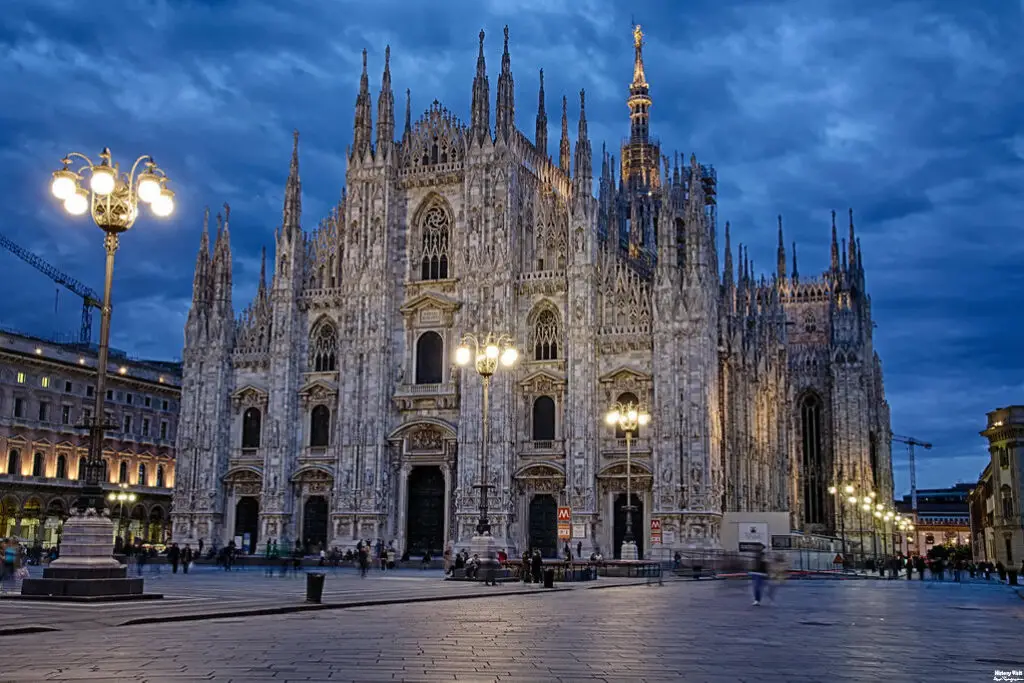
Introduction
Milan Cathedral, also known as the Duomo di Milano, stands as one of the most magnificent and renowned Gothic cathedrals in the world. Situated in the heart of Milan, Italy, this iconic structure is not just a place of worship but a symbol of the city’s historical and cultural legacy. Its towering spires and intricate façade captivate millions of visitors each year, making it a must-see destination for tourists and a cherished landmark for locals.
The construction of Milan Cathedral began in 1386 and spanned over six centuries, involving countless architects, artists, and craftsmen. This extended timeline of construction reflects the evolving architectural styles and the persistent dedication to completing this monumental project. Today, the cathedral is celebrated not only for its sheer size but also for its artistic and historical significance, representing the pinnacle of Gothic architecture in Italy.
As we delve into the origins, architectural marvels, artistic contributions, and cultural importance of Milan Cathedral, we uncover the layers of history and artistry that make it a true masterpiece. This exploration will also provide practical insights for visitors, ensuring a comprehensive understanding of the grandeur and significance of the Duomo di Milano.
Origins and Historical Development
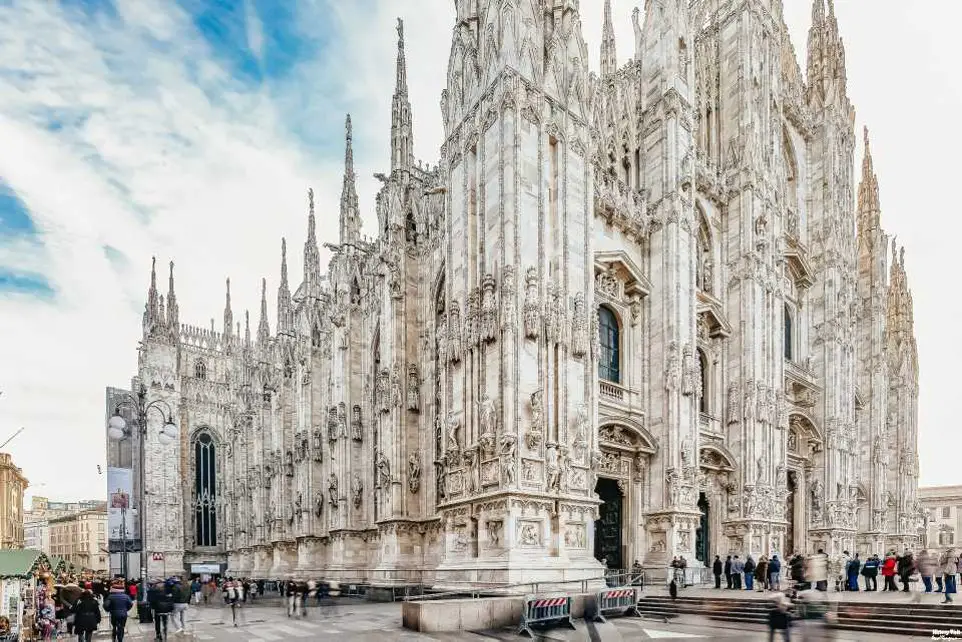
The origins of Milan Cathedral date back to 1386 when Archbishop Antonio da Saluzzo initiated its construction. The project was ambitiously conceived to replace two older churches and create a new, grandiose cathedral that would befit the growing city of Milan. Gian Galeazzo Visconti, the ruler of Milan at the time, supported the endeavor, providing substantial resources and inviting skilled architects and artisans from across Europe to contribute to the project.
Throughout its construction, Milan Cathedral witnessed numerous historical events and changes in architectural direction. The initial design adhered to a more traditional Gothic style, but as the centuries progressed, Renaissance and Baroque influences began to emerge. The involvement of various architects over the years, each bringing their unique vision, contributed to the cathedral’s eclectic yet harmonious appearance. Significant milestones included the completion of the central nave in the late 15th century and the addition of the grand façade in the 19th century.
Despite the lengthy construction period, the dedication to preserving the cathedral’s original Gothic essence remained steadfast. The final touches, including the installation of the iconic Madonnina statue atop the main spire, were completed in 1965. This statue, a gilded copper representation of the Virgin Mary, stands as a symbol of Milan’s spiritual devotion and the culmination of centuries of architectural and artistic effort.
Architectural Design and Features
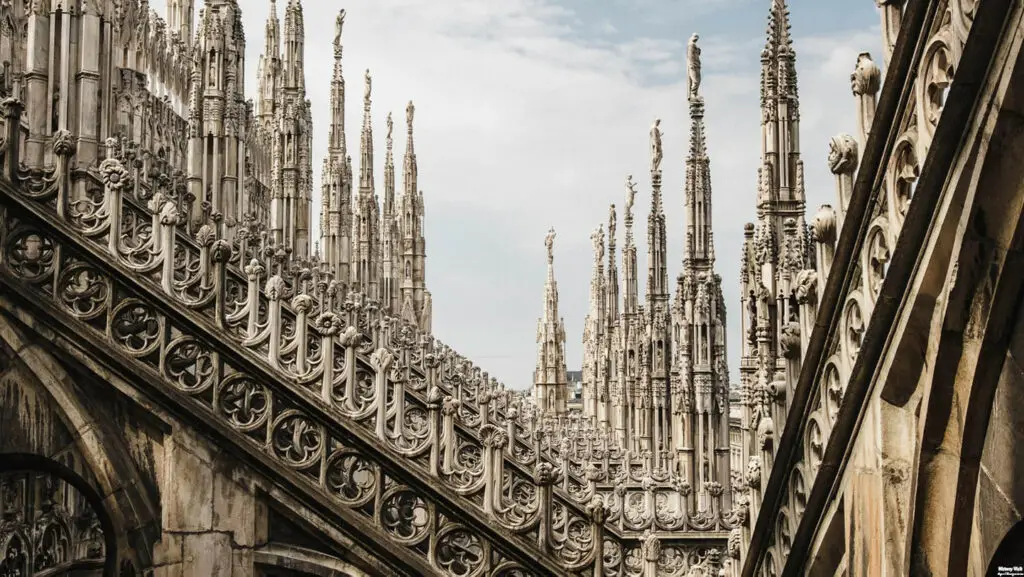
Milan Cathedral is a quintessential example of Gothic architecture, characterized by its pointed arches, ribbed vaults, and flying buttresses. The exterior of the cathedral is adorned with an array of intricate sculptures and statues, making it a veritable gallery of religious art. One of the most striking features is the façade, which is embellished with hundreds of spires and statues, each meticulously crafted to depict biblical figures, saints, and elements of Christian iconography.
The cathedral’s roof is another marvel, offering visitors a unique opportunity to walk among the spires and enjoy panoramic views of Milan. The roof’s design, with its forest of spires and pinnacles, creates a surreal and awe-inspiring experience. The most prominent of these spires is the central one, crowned by the Madonnina statue, which has become an enduring symbol of Milan.
Inside the cathedral, the grandeur continues with its vast nave, capable of holding up to 40,000 people. The interior is illuminated by stunning stained glass windows, each panel narrating scenes from the Bible. These windows, along with the numerous altars, chapels, and the impressive main altar, contribute to the cathedral’s spiritual and aesthetic ambiance. Notable features include the bronze candelabrum by Nicholas of Verdun and the sarcophagus of Saint Charles Borromeo, a former Archbishop of Milan.
Artistic Contributions
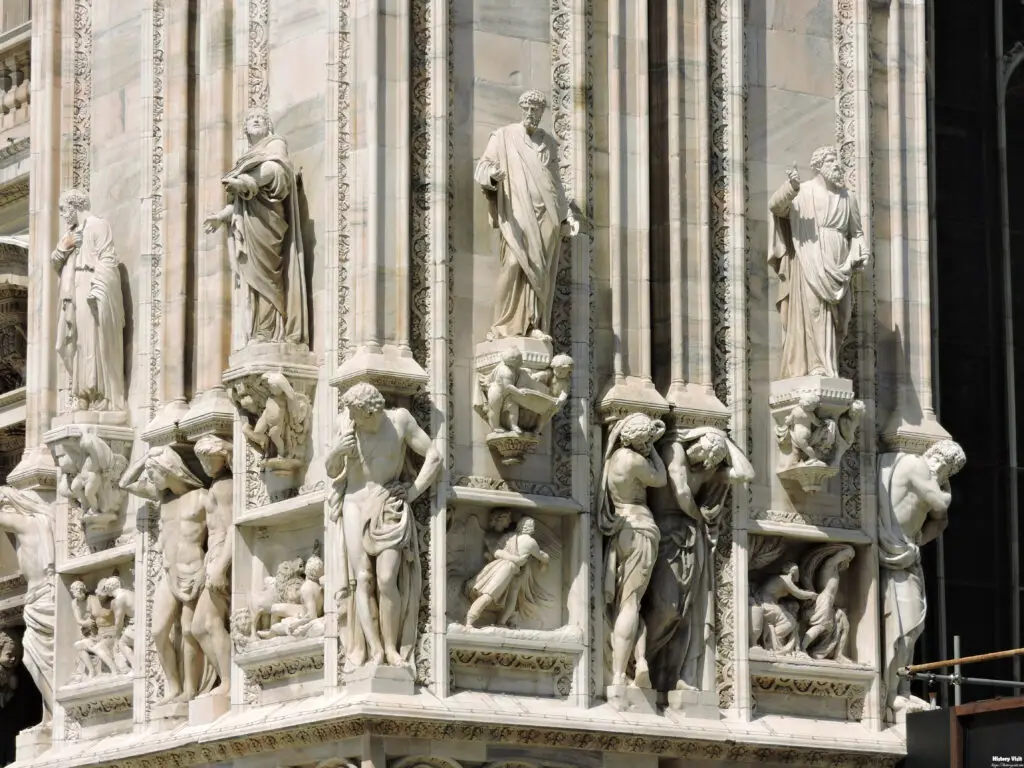
The artistic contributions to Milan Cathedral are vast and varied, with works from some of the most renowned artists of their time. The cathedral’s construction saw contributions from international artists, including the German sculptor Hans von Aachen and Italian sculptor Leonardo da Vinci, who reportedly worked on the cathedral’s lantern. These collaborations enriched the cathedral’s artistic heritage, blending styles and techniques from different regions.
One of the cathedral’s most remarkable artistic features is its collection of stained glass windows, which span centuries of artistic development. These windows, some dating back to the 15th century, are celebrated for their vibrant colors and intricate designs. They depict biblical stories, saints, and scenes from the lives of Christ and the Virgin Mary. The rose window above the main entrance is particularly noteworthy, serving as a focal point of the cathedral’s façade.
The cathedral is also home to numerous sculptures and reliefs, both inside and outside. The façade alone features over 3,400 statues, including gargoyles and grotesques that serve both decorative and structural purposes. Inside, the marble statues of the apostles, prophets, and saints add to the spiritual atmosphere, with each figure meticulously detailed to convey religious fervor and artistic mastery.
Cultural Importance
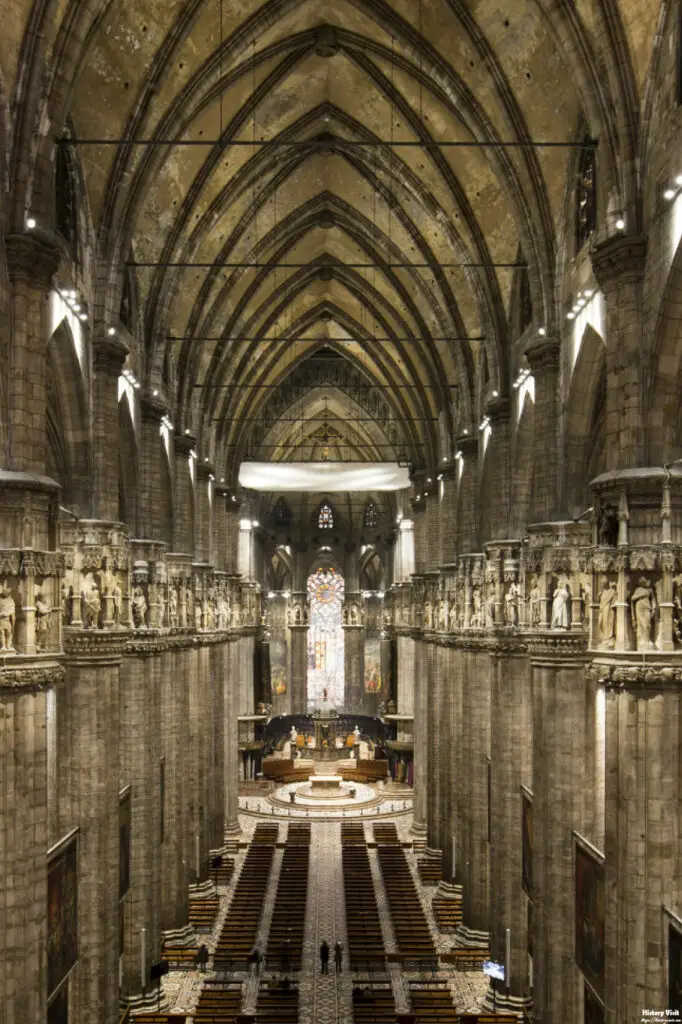
Milan Cathedral holds a significant place in the cultural life of Milan and beyond. As the seat of the Archbishop of Milan, it has been the site of numerous important religious ceremonies and events. These include the ordination of bishops, the celebration of major Christian holidays, and the annual procession of the Holy Nail, a relic believed to be from the True Cross.
Beyond its religious functions, the cathedral has become a symbol of Milanese identity and pride. It represents the city’s historical resilience and artistic achievement, standing as a testament to the collective effort of generations. The cathedral’s influence extends beyond its religious and architectural significance, impacting literature, music, and visual arts. It has inspired countless artists and writers, including the famous Italian poet Alessandro Manzoni.
The Duomo also plays a vital role in Milan’s tourism industry, attracting millions of visitors each year. Its cultural significance is celebrated through various exhibitions and events that highlight its historical and artistic heritage. The cathedral’s museum, located adjacent to the main structure, offers visitors a deeper insight into its history, showcasing artifacts, documents, and artworks related to its construction and evolution.
Visitor Experience
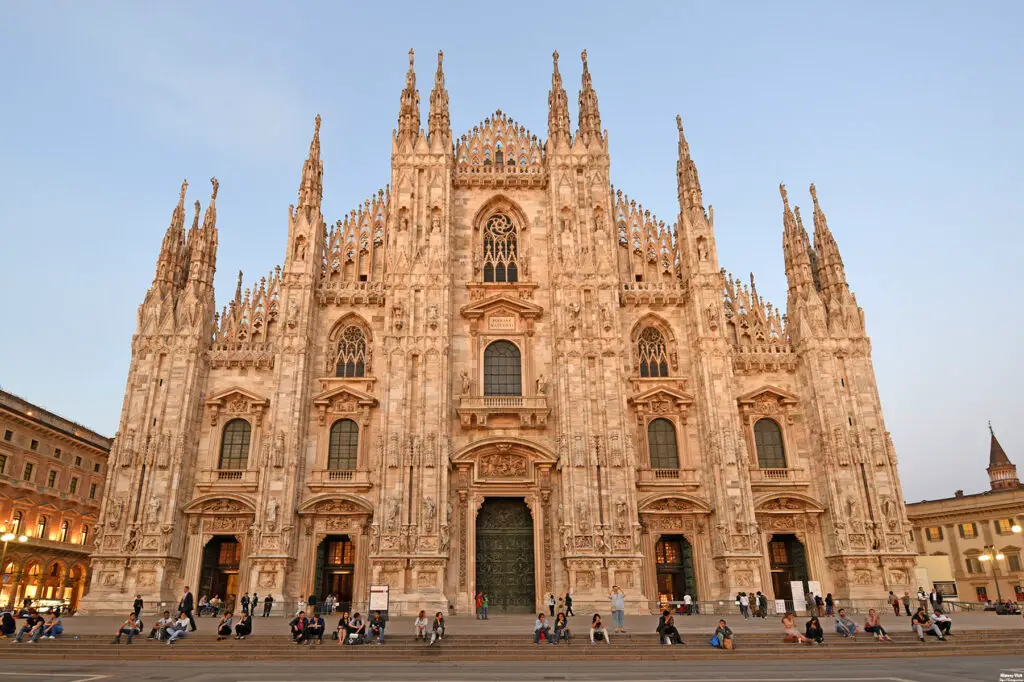
Visiting Milan Cathedral is a profound experience that offers a glimpse into the rich history and artistry of one of the world’s greatest Gothic structures. To make the most of the visit, it is recommended to start with the exterior, taking in the intricate details of the façade and the numerous statues that adorn it. The cathedral’s piazza, Piazza del Duomo, provides a perfect vantage point for appreciating its grandeur.
Once inside, visitors are greeted by the vastness of the nave, the beauty of the stained glass windows, and the numerous chapels and altars that line the interior. Highlights include the statue of Saint Bartholomew Flayed, the sarcophagus of Saint Charles Borromeo, and the bronze candelabrum by Nicholas of Verdun. Guided tours are available and highly recommended, as they provide detailed historical and artistic context.
One of the most unique aspects of visiting Milan Cathedral is the opportunity to explore its rooftop. Accessible by both stairs and an elevator, the rooftop offers stunning views of the city and a close-up look at the spires and statues. The experience of walking among these Gothic pinnacles is unparalleled, providing a sense of the scale and intricacy of the cathedral’s architecture.
Conclusion
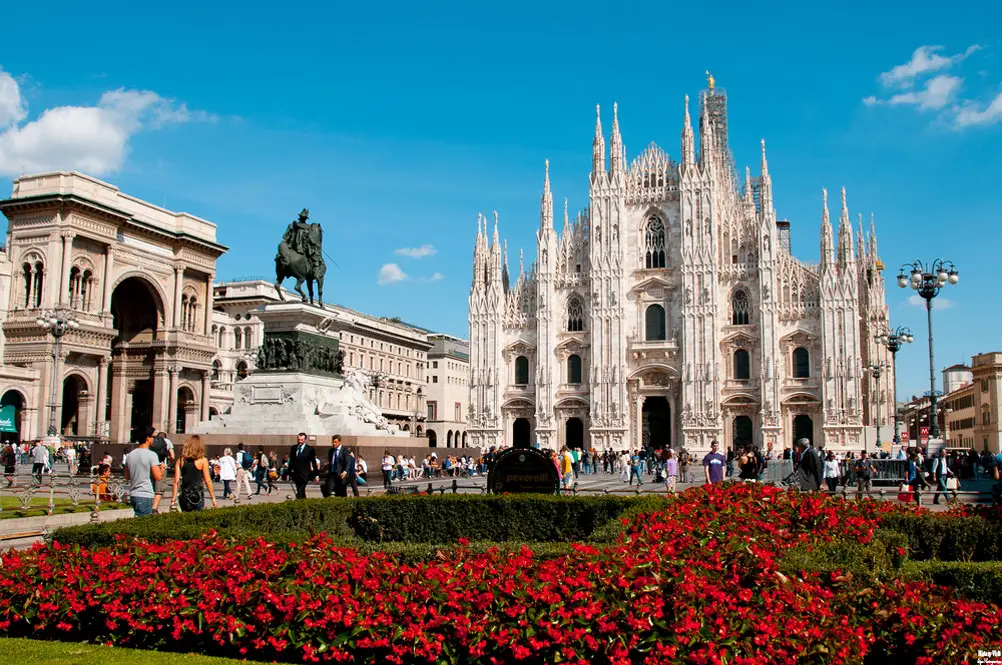
Milan Cathedral stands as a magnificent testament to the enduring power of faith, artistry, and human perseverance. Its construction, spanning over six centuries, reflects the dedication and skill of countless individuals who contributed to its creation. Today, the Duomo di Milano is not only a place of worship but a cultural and historical icon that continues to inspire awe and admiration.
The cathedral’s architectural and artistic splendor, from its intricate Gothic façade to its breathtaking stained glass windows, makes it a masterpiece of medieval craftsmanship. Its cultural significance, both in religious and secular contexts, underscores its importance as a symbol of Milanese identity and heritage. Visitors to Milan Cathedral are treated to an immersive experience that connects them with the rich history and artistry of this extraordinary monument.
In exploring the grandeur of Milan Cathedral, we gain a deeper appreciation for the complexities and beauty of Gothic architecture, the dedication of those who built it, and the cultural heritage it represents. The Duomo di Milano remains a beacon of spiritual and artistic achievement, inviting all who visit to marvel at its timeless majesty.


